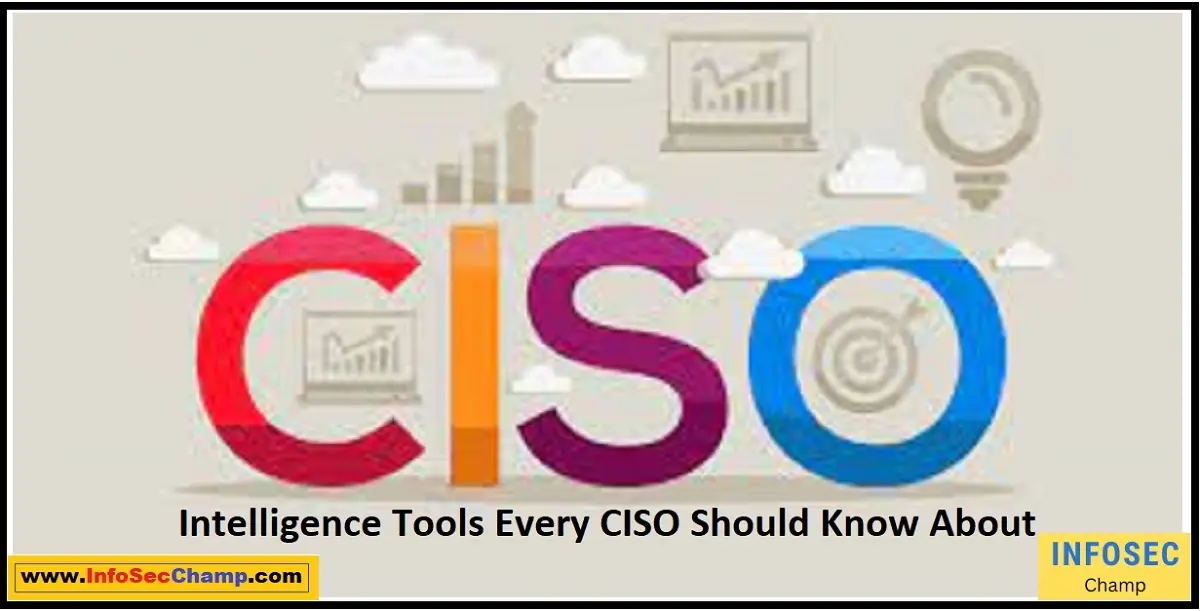A Chief Information Security Officer (CISO) plays a crucial role in ensuring that an organization’s data and infrastructure are secure as cyber threats grow in sophistication and frequency. It’s crucial to keep up with the most recent trends, best practices, and tactics if you want to succeed in this crucial function as a CISO or have just been nominated for the position. We’ll provide you with all the knowledge you need to succeed as a new CISO in this article, including professional advice, important duties, essential competencies, and more.
This post will give you the knowledge and resources you need to be a successful CISO, whether you’re new to the position or an experienced security professional. We’ll look at the primary duties of a CISO, such as risk management, compliance, governance, and incident response. We’ll also go over the crucial abilities you’ll need to develop, such as leadership, communication, and technical proficiency. You’ll have a thorough understanding of what it takes to be a good CISO and how to advance your career by the time you’ve finished reading this article.
What are the primary responsibilities of a Chief Information Security Officer?
Your main duty as CISO is to guarantee the infrastructure and digital assets of your company are secure.
The following are some of the primary duties of a CISO:
- Creating and putting into practice a successful cybersecurity strategy that is in line with corporate objectives.
- Frequent vulnerability testing and risk assessments are used to identify and reduce security risks.
- Ensuring adherence to pertinent regulatory norms and data privacy laws.
- Establishing and upholding security policies, procedures, and best practices.
- Handling incident response and business continuity planning in the event of security breaches or calamities.
- Educating and informing stakeholders and staff about cybersecurity.
- Conducting security evaluations and audits to find opportunities for improvement.
In order to work well with important stakeholders in your firm, a CISO must also have good leadership and communication abilities.
What are the top skills needed to succeed as a CISO?
A CISO must have both technical and business expertise.
Here are some critical abilities you must master to succeed as a CISO:
- Leadership: You must be able to give your team motivation and strategic direction so they can accomplish their assigned tasks, while also effectively conveying security threats and suggestions to executive leadership.
- Technical knowledge: You should be well-versed in cybersecurity technologies and best practices, such as network and infrastructure security, cloud security, threat intelligence, and incident response.
- To create a thorough security program that is in line with corporate goals and objectives, you must be able to recognize and rank risks and vulnerabilities.
- Communication: You must be able to clearly and concisely convey difficult technical knowledge to non-technical stakeholders.
- Collaboration: You must be able to work well with cross-functional teams and outside partners including suppliers and regulatory organizations.
- Adaptability is necessary since threats and technologies in the cybersecurity ecosystem are always changing.
How can a CISO effectively manage cybersecurity risks?
A crucial duty of a CISO is to manage cybersecurity threats.
For efficient risk management, use these guidelines:
- To find possible threats and gaps in your organization’s security posture, do frequent risk assessments and vulnerability testing.
- Based on their potential impact and likelihood of occurrence, prioritize risks.
- Create a thorough security program with policies, practices, and technologies to reduce identified threats.
- To identify and quickly respond to potential attacks, keep an eye on and evaluate security occurrences.
- Establish strong access controls, such as multi-factor authentication and role-based access, to reduce the potential harm from a security compromise.
- Create plans for incident response and business continuity to lessen the effects of security issues.
- Check and update security policies and procedures on a regular basis to make sure they are in line with corporate objectives and legal requirements.
- To help employees recognize and avoid potential security dangers, provide cybersecurity education and awareness training.
A CISO may effectively manage cybersecurity risks and safeguard their organization’s digital assets and infrastructure by adhering to these best practices.
What are the key compliance requirements that a CISO must adhere to?
Compliance with pertinent regulatory requirements and data privacy laws is a crucial duty of a CISO.
The following are some of the most important compliance standards that a CISO must follow:
- General Data Protection Regulation (GDPR): GDPR is a regulation from the European Union that regulates the protection of personal data for EU citizens. Companies that handle the personal data of EU individuals are required to adhere to GDPR regulations, which include getting consent for data collection, offering data access and deletion rights, and putting in place suitable security measures to safeguard personal data.
- Payment Card Industry Data Security Standard (PCI DSS): PCI DSS is a standard that regulates the security of payment card data. PCI DSS mandates that businesses that take credit cards implement secure payment systems, safeguard cardholder data, and routinely evaluate security procedures.
- Health Insurance Portability and Accountability Act (HIPAA): HIPAA is a law that controls how patient health information is protected. Healthcare institutions are required to adhere to HIPAA regulations, which include putting in place physical, technical, and administrative protections to protect patient information as well as routinely assessing security policies and procedures.
- Sarbanes-Oxley Act (SOX): SOX is a law that regulates accounting and financial reporting procedures. Publicly traded corporations are required to adhere to SOX regulations, which include setting up internal controls to guarantee accurate financial reporting and maintaining good record-keeping procedures.
To comply with these and other rules, a CISO must design and maintain security policies and processes that adhere to regulatory standards, frequently evaluate and update security controls, and carry out regular security audits and assessments to verify compliance.
How does a CISO ensure effective governance of an organization’s IT security?
A CISO has a crucial role to play in the effective governance of an organization’s IT security.
Following are some best practices for maintaining efficient governance:
- Create and maintain a thorough security structure that is in line with corporate objectives and regulatory standards.
- Create security policies and procedures that expressly lay out the roles, responsibilities, and expectations for security across the business.
- To pinpoint problem areas and monitor advancement, conduct frequent security audits and assessments.
- Encourage a culture of security awareness and education throughout the organization.
- Inform the board of directors and executive leadership of the state of security on a regular basis.
- Create and maintain productive relationships with cross-functional teams, such as legal, human resources, and risk management.
- To spot possible dangers and pinpoint areas for development, continuously monitor and analyze security incidents and trends.
- To keep security policies and procedures current and efficient, review and update them frequently.
A CISO may maintain effective control of an organization’s IT security and safeguard its infrastructure and digital assets by adhering to these best practices.

What are the best practices for developing and implementing a cybersecurity strategy as a CISO?
A crucial duty of a CISO is to create and carry out a thorough cybersecurity strategy.
Here are some best practices for creating and putting into action a successful cybersecurity strategy:
- Establish the aims and objectives of your cybersecurity strategy, and make sure they line up with your company’s objectives and legal requirements.
- Regular risk assessments and vulnerability testing can help you find potential security threats and flaws.
- Create a thorough security program with policies, practices, and technologies to reduce identified threats.
- To reduce the potential harm from a security compromise, establish and maintain strong access controls.
- Install effective firewalls, intrusion prevention systems, and security information and event management (SIEM) tools for your network and infrastructure.
- To quickly identify and address possible risks, routinely monitor and evaluate security occurrences.
- Adopt best practices for cloud security, including identity and access management, data encryption, and regular security audits.
- Encourage a culture of security awareness and education throughout the organization.
- To make sure your cybersecurity strategy and program are still successful, regularly examine and improve them.
- A CISO may create and implement an efficient cybersecurity strategy that safeguards the infrastructure and digital assets of their company by adhering to these best practices.
How does a CISO approach incident response management?
Incident response management is a vital job of a CISO.
The following are some best practices for approaching incident response management:
- Create and keep up an incident response plan that outlines roles, responsibilities, and processes for handling security incidents.
- Create and maintain productive relationships with cross-functional teams, such as legal, human resources, and risk management.
- To make sure your team is ready to respond to possible security problems, conduct frequent incident response drills.
- Develop and maintain effective channels of communication with all parties involved, including the board of directors, customers, and executive leadership.
- Create a successful incident response procedure that involves detection, containment, eradication, and recovery.
- To spot possible dangers and pinpoint areas for development, continuously monitor and analyze security incidents and trends.
- To keep your incident response plan effective, evaluate and update it frequently.
- To pinpoint problem areas and monitor development, conduct post-incident reviews.
A CISO can successfully manage incident response and lessen the impact of security issues by adhering to these best practices.
What are the top cybersecurity threats facing organizations today, and how can a CISO mitigate them?
Cybersecurity threats are continuously changing, therefore it’s essential for CISOs to keep informed about the most recent risks and effective mitigation techniques.
The top cybersecurity risks to businesses today, along with suggestions for reducing them, are listed below:
- Phishing attempts: Phishing attempts aim to dupe people into disclosing personal information or installing malware. Effective security awareness training programs and strong email security controls, such as spam filtering and content filtering, should be implemented by CISOs to reduce this threat.
- Ransomware attacks encrypt data belonging to an organization and demand a ransom in exchange for the decryption key.
- Effective data backup and recovery solutions, robust endpoint security controls, and routine security assessments should all be implemented by CISOs to lessen this threat.
- Insider Threats: Insider threats involve workers or contractors who purposefully or unintentionally cause a security compromise.
- Strong access controls, regular security awareness training, and monitoring user activity for potential anomalies are all steps that CISOs can do to lessen this threat.
- Supply chain attacks: To access a company’s systems or data, supply chain attacks target outside partners or vendors. Effective vendor risk management procedures, regular security audits of third-party vendors, and strong network segmentation measures should all be implemented by CISOs to lessen this threat.
CISOs may successfully mitigate possible attacks and safeguard their organization’s digital assets and infrastructure by staying up to date on the most recent cybersecurity threats and establishing efficient security policies.
What is the career path for a Chief Information Security Officer, and what qualifications are required?
A CISO often has several years of expertise in cybersecurity or related sectors, followed by senior positions in information security.
The following are some prerequisites for becoming a CISO:
- A bachelor’s or master’s degree in computer science, cybersecurity, or a related profession.
- Many years of expertise in cybersecurity or similar sectors like risk management, compliance, or governance.
- Certifications within the industry, such as Certified Information Systems Security Professional (CISSP), Certified Information
- Security Manager (CISM), or Certified in Risk and Information Systems Control (CRISC).
strong leadership and communication abilities. - Technical proficiency in cybersecurity best practices and technology.
- Knowledge of incident management and business continuity planning.
- To properly safeguard the digital assets and infrastructure of your company, you must, as CISO, stay current on the most recent cybersecurity developments and best practices.
How can a new CISO build and maintain strong relationships with key stakeholders in an organization?
To effectively manage cybersecurity risks and safeguard their organization’s digital assets and infrastructure, a CISO must establish and maintain strong connections with key stakeholders.
For creating and preserving solid relationships, follow these best practices:
- Recognize the company objectives and ambitions of important parties, including senior leadership, legal, and human resources.
- Clearly and succinctly convey cybersecurity threats and recommendations that are in line with corporate objectives.
- Encourage a culture of security awareness and education throughout the organization.
- Create and maintain productive relationships with cross-functional teams, such as legal, human resources, and risk management.
- Inform the board of directors and executive leadership of the state of security on a regular basis.
- To continuously enhance and hone security policies and procedures, and solicit feedback from stakeholders.
- To keep up with the most recent developments in cybersecurity trends and best practices, attend industry conferences and forums.
- Provide efficient lines of communication, such as frequent security awareness training, to inform stakeholders about the value of cybersecurity and their part in safeguarding the organization’s digital infrastructure and assets.
- Create and maintain efficient incident response and business continuity procedures to lessen the effects of security issues.
- To preserve the organization’s digital assets and infrastructure, establish and maintain strong partnerships with external stakeholders including vendors and regulatory agencies.
By adhering to these best practices, a new CISO can effectively manage cybersecurity risks while establishing and maintaining solid connections with important stakeholders in their firm.
Conclusion:
Your job as the Chief Information Security Officer is crucial in defending the infrastructure and digital assets of your company from any online dangers. You may be successful in your position as CISO by creating and implementing an efficient cybersecurity strategy, prioritizing risk management, staying current on the most recent cybersecurity threats and best practices, and establishing and maintaining excellent connections with key stakeholders.
Remember to keep an eye out for security-related events and trends, evaluate and update your security policies and procedures on a regular basis, and promote a culture of security awareness and education throughout your firm. You can effectively manage cybersecurity risks and safeguard your organization’s digital assets and infrastructure if you have the necessary training and credentials.

FAQs:
What are the key compliance requirements that a CISO must adhere to?
A: A CISO must abide by pertinent legal requirements and data privacy laws including GDPR, PCI DSS, HIPAA, and SOX. To ensure compliance, they must continuously evaluate and update security controls, establish and maintain security policies and processes that adhere to regulatory requirements, and carry out frequent security audits and assessments.
How can a CISO effectively manage cybersecurity risks?
A CISO can effectively manage cybersecurity risks by performing regular risk assessments and vulnerability testing, prioritizing risks based on their potential impact, creating a thorough security program, keeping track of and analyzing security events, putting in place strong access controls, creating an incident response and business continuity plans, and training staff members in cybersecurity.
What are the top skills needed to succeed as a CISO?
A: Leadership, technical proficiency, risk management, communication, teamwork, and adaptability are the most important qualities for a CISO to possess. A CISO must be able to give strategic direction, spot potential security risks and weaknesses, explain complicated technical information to non-technical audiences, collaborate successfully with cross-functional teams and outside partners, and quickly adjust to evolving threats and technologies.
What does a CISO do?
A CISO is in charge of assuring the safety of a company’s digital assets and infrastructure. This entails creating and putting into practice a successful cybersecurity strategy, recognizing and reducing security threats, assuring adherence to pertinent legal requirements and data protection laws, managing incident response, and business continuity planning.
What qualifications are required to become a CISO?
A: To become a CISO, you typically need a bachelor’s or master’s degree in cybersecurity, computer science, or a related field, several years of experience in cybersecurity or related fields, industry certifications like CISSP, CISM, or CRISC, strong leadership and communication skills, technical expertise in cybersecurity technologies and best practices, and experience managing incident response and business continuity planning.
What are the top cybersecurity threats facing organizations today?
A: Phishing attacks, ransomware attacks, insider threats, and supply chain attacks are the top cybersecurity risks facing businesses today. A CISO must put in place strong endpoint and network security controls, effective vendor risk management procedures, effective security awareness training programs, data backup and recovery solutions, and frequent security audits and assessments to counter these threats.

